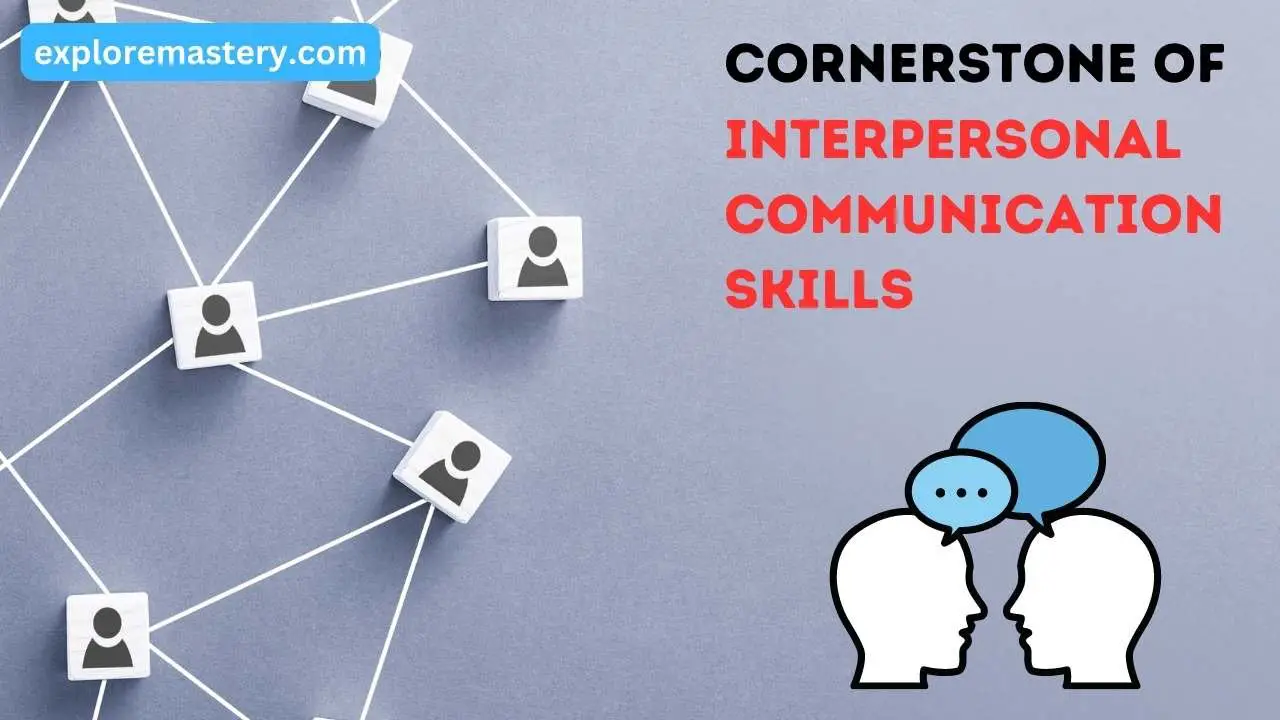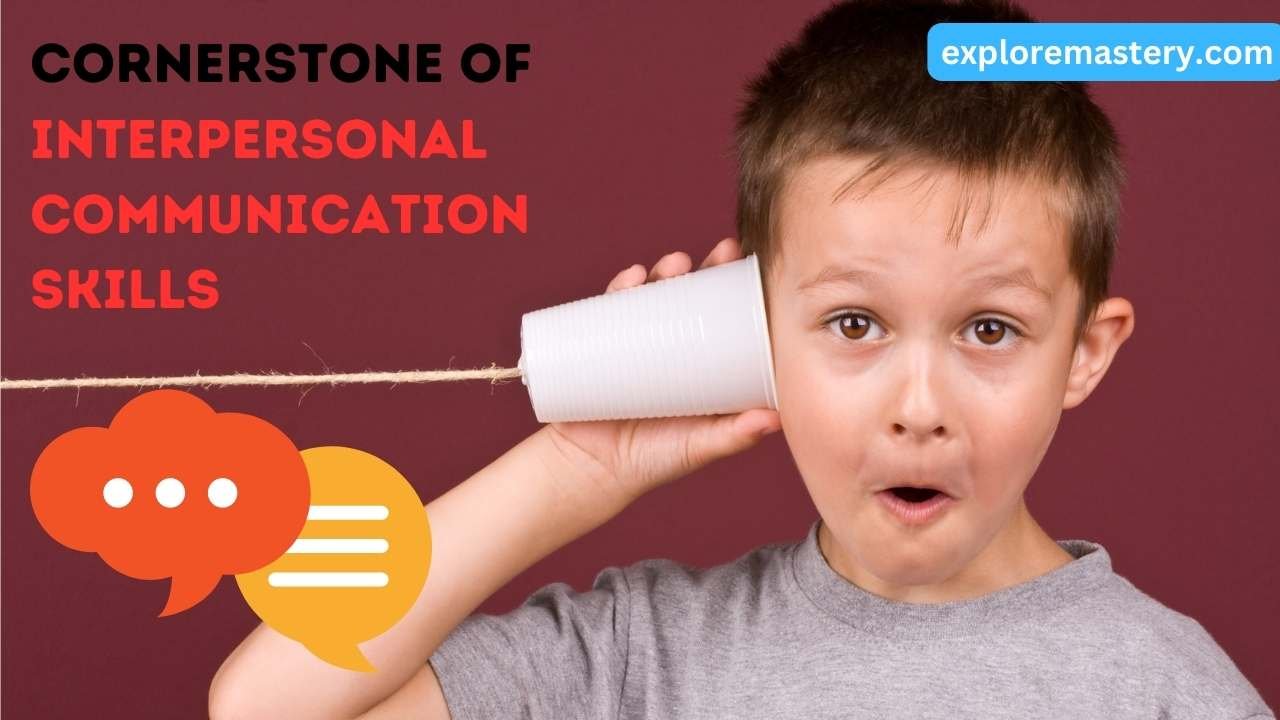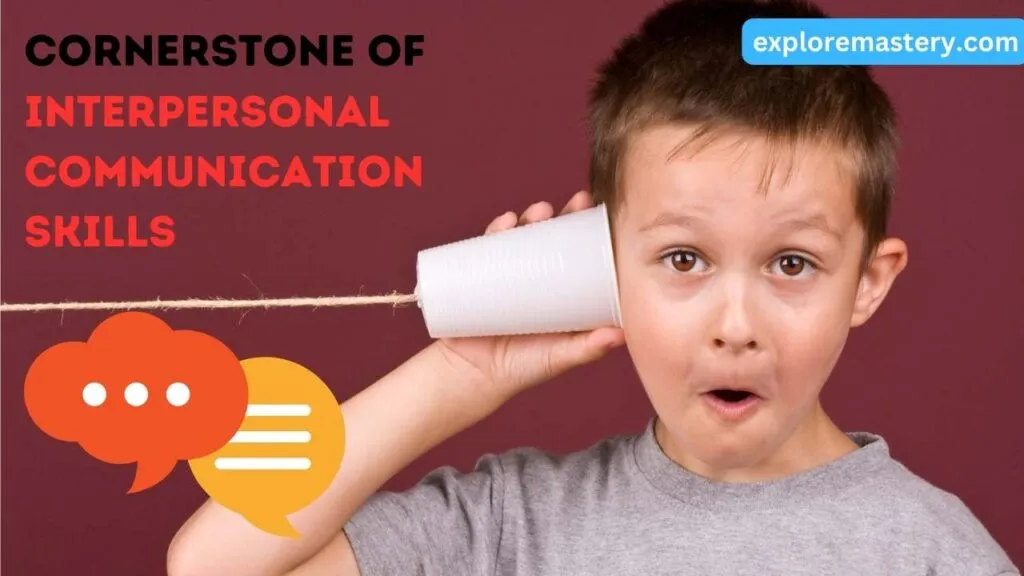Introduction: Why Communication is Your Superpower
Ever wondered why some folks just seem to “get” people? They walk into a room and instantly connect, like they’ve got some secret sauce. Well, spoiler alert: that secret sauce is effective interpersonal communication. And guess what? It’s not just for the social butterflies; it’s the cornerstone of effective interpersonal communication skills in almost every aspect of life. Intrigued? Stick around, because we’re about to dive deep into this game-changing skill.
The Importance of Interpersonal Communication: It’s a Big Deal
So, let’s get into the meat and potatoes of this topic, shall we? Why is interpersonal communication such a big deal? I mean, we talk to people every day, right? From the barista who hands us our morning coffee to our colleagues, friends, and family, our days are filled with endless chatter. But here’s the kicker: not all chatter is created equal. And that’s where the magic of interpersonal communication comes into play.

What’s the Buzz About?
First off, let’s break it down. Interpersonal communication isn’t just about talking; it’s about connecting. It’s the difference between saying “hi” to your neighbor and actually stopping to ask how they’re doing—and genuinely caring about the answer. It’s the art of exchanging information, ideas, and, most importantly, feelings. It’s like the difference between a handshake and a hug; both are forms of greeting, but one is definitely warmer and more meaningful than the other.
The Glue That Holds Us Together
Think of interpersonal communication as the glue that holds all your relationships together. Whether it’s a romantic relationship, a friendship, or even a professional connection, effective communication is often the cornerstone. It’s like the foundation of a house; if it’s strong, it’ll support a beautiful structure, but if it’s weak, well, you’re in for some serious trouble.
More Than Just Words
And let’s not forget, communication isn’t just about words. Oh no, my friends, it’s a full-bodied experience! It’s in the way your eyes meet when you’re sharing a secret. It’s in that reassuring pat on the back from a friend when you’re down. It’s even in that collective eye-roll you share with a colleague during a boring meeting. It’s a multi-layered, multi-sensory experience that goes way beyond mere words.
The Ripple Effect
Here’s something you might not have considered: good interpersonal communication has a ripple effect. When you communicate effectively, it not only improves your personal interactions but also influences the community around you. It’s like throwing a pebble into a pond; the ripples spread out, touching everything in their path. Imagine a world where everyone communicated openly, honestly, and effectively. Sounds like a utopia, doesn’t it? But guess what? It starts with you.
So, to sum it up, interpersonal communication is a big deal because it’s the cornerstone of all human interaction. It’s the key to building strong relationships, fostering community, and yes, even making the world a better place. And the best part? It’s a skill that anyone can learn and improve. So, are you ready to up your communication game?
Key Components of Effective Interpersonal Communication: Your Toolkit
Alright, so we’ve established that interpersonal communication is the bee’s knees. But what makes it tick? What are the nuts and bolts that hold this intricate machinery together? Think of it like assembling a piece of IKEA furniture; you’ve got your screws, your nails, and your wooden planks. But unless you know how they fit together, you’re not getting that dreamy bookshelf. So, let’s dive into the key components that make up your interpersonal communication toolkit.
Active Listening: The Unsung Hero
First up, Active Listening. Now, you might be thinking, “Listening? That’s it?” But hold your horses! Active listening isn’t just about letting words flow into your ears. It’s about absorbing, understanding, and responding to those words. It’s like being a sponge; you soak up the information, squeeze out the unnecessary bits, and keep what’s essential. And trust me, people can tell when you’re genuinely listening. It makes them feel valued, and who doesn’t want to feel like they matter?
Clarity and Conciseness: The Dynamic Duo
Next on the list, Clarity and Conciseness. Ever had a conversation that felt like wandering through a maze? You enter through one point and find yourself lost, with no idea how to get to the end. That’s what happens when communication lacks clarity and conciseness. Your words should be like a GPS, guiding the listener to the point you’re trying to make. No detours, no unnecessary scenic routes, just a straight path to understanding.
Openness and Honesty: The Building Blocks of Trust
Ah, Openness and Honesty, the bread and butter of effective communication. Without these, you’re building a house of cards, my friends. One puff of wind and it all comes tumbling down. Being open and honest doesn’t mean oversharing or being brutally blunt. It’s about being genuine, saying what you mean, and meaning what you say. It’s like cooking with fresh ingredients; the end result is just so much better.

Respect and Courtesy
Last but certainly not least, Respect and Courtesy. These might sound like old-school virtues, but they’re the cherry on top of the communication sundae. You could be the most articulate, attentive listener in the world, but if you lack respect and courtesy, you’re missing the mark. It’s like a beautiful cake without any frosting; it might taste good, but it’s not quite complete.
So there you have it, your toolkit for effective interpersonal communication. Each component is crucial, and they all work together like a well-oiled machine. And the best part? Just like any toolkit, you can always add more tools as you go along. So, are you ready to become a master craftsman of communication?
Common Barriers: The Roadblocks and Detours
So, we’ve got our toolkit ready, and we’re all set to build some bridges. But wait a minute! What’s that up ahead? Roadblocks and detours? Yep, even the smoothest journeys have their bumps and hiccups. It’s like going on a road trip; you’ve got your snacks, your playlist, and your sense of adventure, but sometimes you still hit traffic or a closed road. So, let’s talk about the common barriers that can throw a wrench in your communication game.
Emotional Barriers: The Invisible Walls
First up, Emotional Barriers. Ever tried having a heart-to-heart with someone who’s fuming mad or sobbing uncontrollably? It’s like trying to hug a porcupine; you want to get close, but those quills are in the way. Emotions, especially intense ones like anger, fear, or sadness, can act like invisible walls. They block the flow of communication, making it hard to get your message across or to understand someone else’s. The trick here is emotional intelligence. Recognizing these barriers in yourself and others is the first step to dismantling them. It’s like having a map that shows you where the roadblocks are so you can navigate around them.
Cultural and Language Barriers: The Tower of Babel
Next, let’s talk about Cultural and Language Barriers. Ever felt like you’re speaking a different language even when you’re technically speaking the same one? Cultural nuances, idioms, and even accents can make simple conversations feel like you’re both building a modern-day Tower of Babel. The key here is patience and a willingness to learn. It’s like being a tourist in a foreign country; you might not speak the language, but a smile and some effort go a long way.
Technological Barriers: The Double-Edged Sword
Ah, technology, the double-edged sword of modern communication. On one hand, it’s never been easier to connect with people across the globe. A few clicks and you’re video chatting with someone halfway around the world. But on the flip side, technology can also be a barrier. Poor connections, misunderstood texts, and the cold, impersonal nature of digital communication can sometimes make us feel more isolated than connected. It’s like having a car that can either speed up your journey or break down and leave you stranded.
So, there you have it, the common barriers that can make your communication journey a bit bumpy. But remember, a barrier is not a dead-end; it’s just an obstacle to overcome.
Practical Tips and Exercises: Your Action Plan
So, we’ve navigated the landscape, identified the roadblocks, and even assembled our toolkit. But then what? How can we take this wealth of information and use it in the real world? It’s like having a gym membership: it’s not enough to just sign up, you have to go to the gym and work up a sweat! So, let’s roll up our sleeves and get started with some tips and tasks that will make you a communication master.
Role-Playing: The Rehearsal Before the Big Show
First up, Role-Playing. Now, don’t roll your eyes; I’m not talking about Dungeons & Dragons (although that’s cool too!). Role-playing is like the rehearsal before the big show. It gives you a safe space to practice those tricky conversations you dread. Got a job interview? A tough talk with a loved one? Role-play it with a friend first. It’s like doing a dress rehearsal; you get to iron out the kinks before the curtain rises.
The Power of “I” Statements: Own Your Feelings
Next, let’s talk about “I” Statements. Instead of saying, “You make me feel…”, try flipping the script to “I feel… when you…” This tiny tweak can make a world of difference. It shifts the focus from blaming to owning your feelings. It’s like switching from playing the victim to being the hero of your own story.
The 3-Second Rule: Pause Before You Speak
Ever said something you instantly regretted? All of us have been there. So, the 3-Second Rule can save your life. Before responding, especially in heated moments, pause for three seconds. It gives you time to think about what you want to say and choose the right words. It’s like taking a deep breath before diving into a pool; it prepares you for what’s coming.
Mindfulness: The Art of Being Present
Last but not least, Mindfulness. Being fully present in a conversation shows respect and enhances understanding. Simple exercises like focusing on your breath or grounding yourself in the moment can work wonders. It’s like tuning an instrument before a concert; it ensures you hit all the right notes.
Conclusion: Your Roadmap to Success
Wowza, what a ride we’ve been on, right? We’ve journeyed through the ins and outs of interpersonal communication, from understanding its sheer importance to tackling the barriers that can trip us up. We’ve even assembled a toolkit and action plan to help you become the communication superstar you were born to be. It’s like we’ve been on an epic road trip, and now we’re pulling into the final destination, feeling all the wiser and more equipped for the adventures ahead.
Effective interpersonal communication isn’t just a skill; it’s a lifestyle. It’s the cornerstone of meaningful relationships, successful careers, and yes, even your own personal growth. It’s like the roots of a tree; the deeper and stronger they are, the taller and more resilient the tree becomes. And just like a tree, you too will face storms and seasons of change, but with your newfound skills, you’re more than ready to weather anything.




